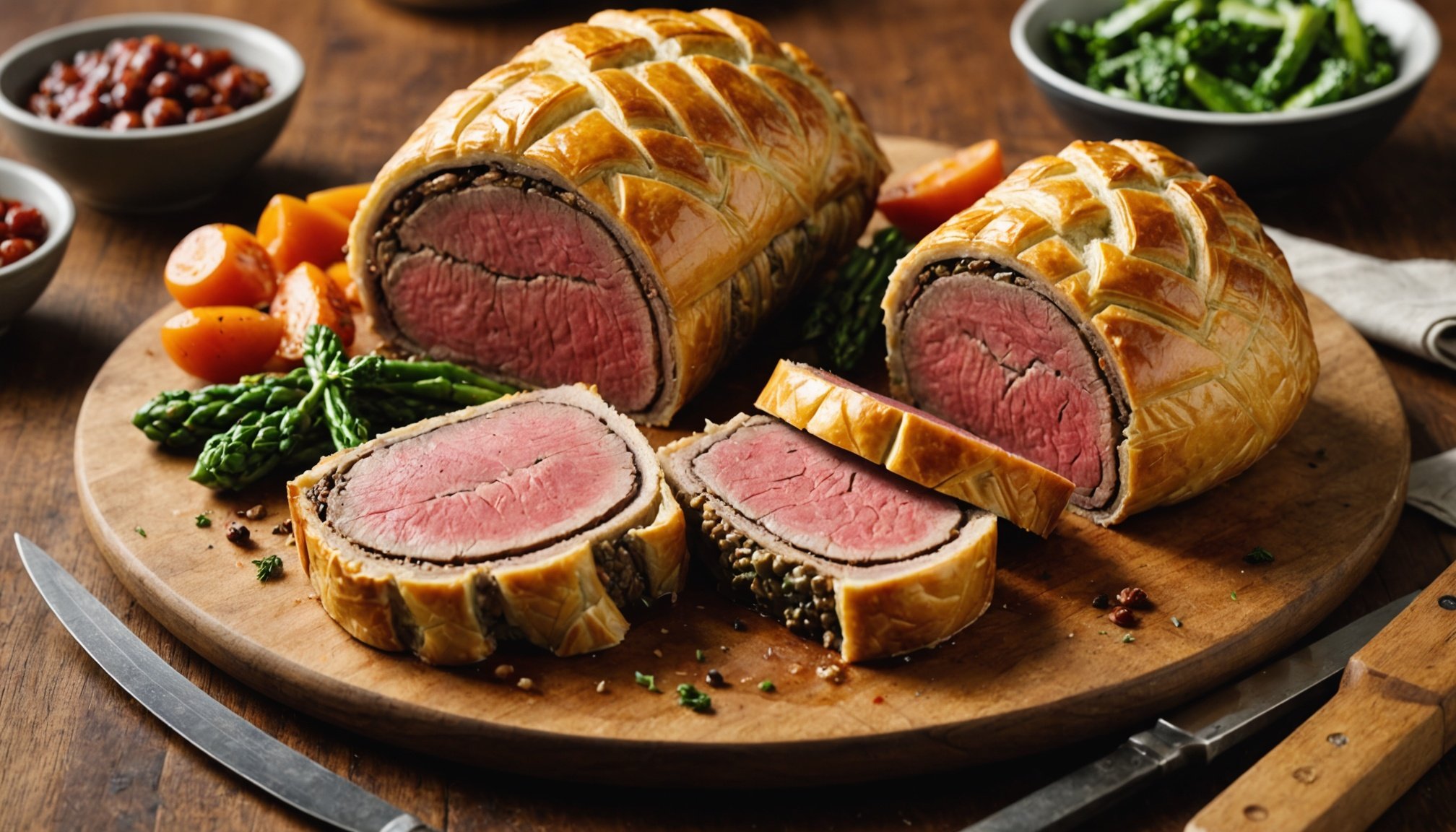Beef Wellington stands as a hallmark dish, renowned for its exquisite combination of beef and pastry, entwined with rich flavors to create a culinary masterpiece. This iconic dish, often reserved for special occasions, embodies the spirit of gourmet dining with its intricate layers and aromatic appeal. Our recipe aims to guide you through the steps of crafting an unforgettable Beef Wellington, ensuring each element resonates with flavor and precision. Join us as we explore the art and practice behind this beloved dish.
Selecting and Preparing the Perfect Beef Tenderloin
The journey to a superb Beef Wellington begins with selecting a top-quality beef tenderloin. This cut is revered for its tenderness and flavor, making it the ideal choice for this dish. When visiting your local butcher or supermarket, choose a center-cut tenderloin, as it provides uniformity in cooking and presentation.
Also read : What techniques should you use to perfectly poach an egg for Eggs Benedict?
Preparing the Beef
Once you have your tenderloin, trimming and seasoning are paramount. Remove any silver skin and excess fat to ensure even cooking. A simple seasoning of salt and pepper will enhance the beef’s natural flavors without overwhelming it.
- Searing the Meat: Begin by heating a pan until it’s smoking hot. Add a touch of oil and sear the tenderloin on all sides. This process ensures a crusty exterior, sealing in the juices, while imparting a depth of flavor.
- Resting Time: After searing, resting the beef is crucial. It allows the juices to redistribute, leading to a succulent bite.
By focusing on these steps, you lay a strong foundation for your Beef Wellington, ensuring the meat is both tender and flavorful. A well-prepared tenderloin is the heart of this dish, setting the stage for the layers that follow.
Have you seen this : How can you incorporate seasonal vegetables into a classic ratatouille recipe?
Creating Flavorful Duxelles for the Ultimate Layer
Beyond the tender beef lies the secret to a remarkable Beef Wellington—the mushroom duxelles. This finely chopped mushroom mixture is a cornerstone, providing depth and an umami-rich layer that elevates the dish.
Crafting the Duxelles
- Mushroom Selection: Opt for a blend of button and cremini mushrooms to balance flavor. Ensure they are fresh, with a firm texture.
- Chopping Technique: Finely chop the mushrooms using a knife or food processor. The key is achieving a consistent texture that will wrap the beef seamlessly.
Cooking the Duxelles
- Sautéing: Begin by heating a pan over medium heat with a splash of oil and a knob of butter. Add the mushrooms, a pinch of salt, and cook until the moisture evaporates. This process intensifies the mushroom’s flavor, creating a concentrated mixture.
- Seasoning and Herbs: Introducing aromatic herbs like thyme enhances the duxelles. The goal is a balanced and robust layer that complements the beef.
The duxelles not only adds complexity but also acts as a moisture barrier, ensuring that the pastry remains crisp and flaky. Each element synergizes, resulting in a harmonious blend of flavors.
Mastering the Pastry Wrapping Technique
The next pivotal step in creating the perfect Beef Wellington is mastering the wrapping technique. Using puff pastry encompasses both aesthetics and function, providing a golden, flaky exterior that encases the savory fillings.
Preparing the Pastry
- Pastry Selection: Choose a quality puff pastry, ensuring it is chilled but pliable. This balance is essential for achieving a crisp bake.
- Rolling Out: Lightly flour a surface and roll the pastry to the appropriate thickness, enough to fully envelop the beef and fillings without being overly thick.
The Wrapping Process
- Layering with Prosciutto: Lay thin slices of prosciutto atop the pastry before adding the duxelles. This adds a savory edge while preventing moisture from seeping into the pastry.
- Wrapping: Place the seared and cooled beef atop the layered pastry. Gently wrap, ensuring a tight seal. Use beaten egg to bind and add a lustrous finish.
The attention to detail in this step ensures the final product is not only flavorful but visually stunning. A well-wrapped Wellington is a testament to culinary craftsmanship, showcasing the beauty of the dish.
Perfecting the Baking Process for Flawless Results
The culmination of making a Beef Wellington lies in the baking. This process, though straightforward, demands precision to achieve a well-cooked interior and a perfectly golden crust.
Preheat and Prepare
- Oven Preparation: Preheat your oven to 400°F (200°C). A hot oven is crucial for the pastry to puff and crisp effectively.
Strategic Baking
- Initial Bake: Place the wrapped Wellington on a baking sheet lined with parchment. Position it seam-side down to prevent splitting.
- Monitoring: Bake for approximately 25-30 minutes, carefully watching for a golden-brown hue. An internal thermometer is a valuable tool, indicating when the meat reaches the desired doneness.
- Resting: After removal from the oven, allow the Wellington to rest. This step is essential for settling juices and achieving a clean cut.
The baking stage is the final testament to your preparation and skill. When executed correctly, the result is a mouthwatering Beef Wellington that captivates both the eyes and the palate.
In crafting a Beef Wellington, every step holds significance, from selecting the finest tenderloin to mastering the art of wrapping and baking. Each layer contributes to a dish that is both complex and harmonious, celebrating the nuances of flavor and texture. By following these best practices, you’ll create a dish that not only impresses but also offers a deeply satisfying dining experience. With practice and attention to detail, your Beef Wellington will stand as a testament to culinary skill, a highlight of any occasion. Embrace the challenge and relish the rewards of this historic dish, sharing the joy of a well-executed recipe with friends and loved ones.











